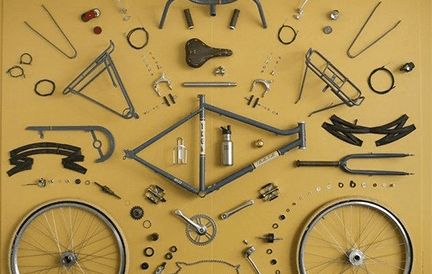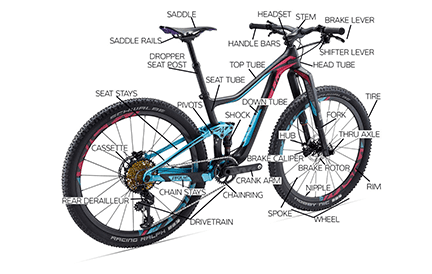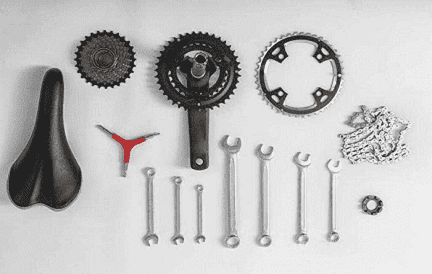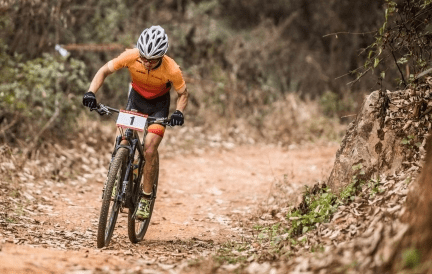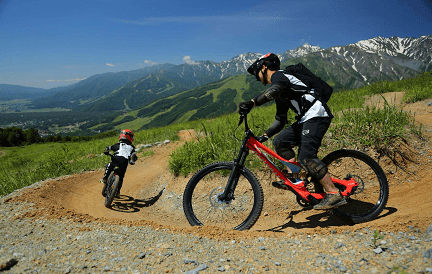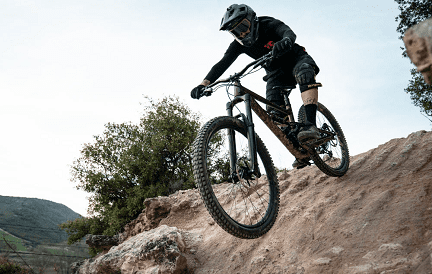You have just bought a new mountain bike and want to get out on some trails, or are you looking for new MTB saddles because your current one is too uncomfortable?
It is critical to think about all of your options before making a decision. After all, you will be in the saddle for a long time, so comfort is essential!
- Part 1: Introduction to Mountain Bike Saddles
- Part 2: Women’s MTB Saddles
- Part 3: Bike Saddle Mountain Bike Sizing Guide
- Part 4: Covers of Best MTB Saddles
- Part 5: Few Final Words
Part 1: Introduction to Mountain Bike Saddles
Plenty of saddles on the market is tailored to specific cycling disciplines such as BMX, road racing, touring, mountain biking, and so on, whereas comfort saddles are designed as “all-around” choices for laid back or leisure cyclists, with the focus on convenience instead of weight or performance.
The kind of riding you do can have a big impact on the saddle you have chosen. Leisure and city riders will enjoy the extra cushioning of a well-cushioned saddle without worrying about the load, whereas road or MTB riders will be looking for lighter weight performance saddles that laid back riders may find uncomfortable at first.
Parts of the Saddle
In high-end road and MTB racing saddles constructed of carbon fiber, the hull is the most critical component. Tail: wide flaring back that tapers to a long, pointed snout Anatomical cut-outs or stress channels running down the centre might enhance blood flow to weak regions, saving weight and increasing flexibility. Most racing saddles have some kind of cover over the hull, with leather being the most convenient and practical.
Most saddles feature polyurethane foam cushioning between the hull and the cover, but others contain memory foam, silicone gel, and even inflated air cushions. MTB and dirt jump saddles with protective plastic or Kevlar scuff patches on high-friction locations like the back and sides are typical.
Lastly, the twin metal rains under the hull connect the saddle to the seat post, whose flexible design adds to rider comfort by soaking up pressure waves.
Saddle rails are commonly made of cro-moly steel, also referred to as cro-mo, with lighter but far more expensive titanium (Ti) displayed on higher-end designs.
The Fit of the Saddle
Because of the endless variation in the human form, one rider’s ideal ledge could be torture for another. When searching for the pinnacle of a perfectly-fitting saddle, keep in mind that more padding does not always equal more contentment.
The saddle’s hull shape and alignment with your body are even more critical. The saddle’s tail should be as near as feasible to the gap between your sitting bones, for optimal pelvic support.
Realizing the importance of this, many saddle makers now offer a variety of widths.
When it comes to selecting the best saddle for you, nothing beats trying out a few different models.
Often, the riders will try several saddles prior to actually finding one that fits, while others will transfer a reliable seat from one bike to the other. Before giving a perch the thumbs down or up, many riders believe in a “breaking in” period with new saddles. A saddle that feels unsatisfactory right out of the box could fit perfectly a few weeks later, or an instantaneously comfy seat could become a pain in your rear end after a few weeks.

Part 2: Women’s MTB Saddles
The difference between the best and worst women’s mountain bike saddles can make or break your day on the trails.
Choosing the perfect saddle for women’s mountain bikes might be the difference between hours of fun and hours of misery, so we did the research for you.
Important features to keep in mind while buying a Women’s Best Mountain Bike Saddle
Design
There are a few general differences in the anatomy of female and male bicyclists; the most major difference is the genitalia or soft tissue, but there are others as well.
Women, for instance, are more pliable than men and will twist their pelvis more while riding, so saddle creators are increasingly taking these things into consideration when designing saddles for women.
A stress reduction channel or a cut in the middle of women’s saddles protects riders’ soft tissue. They may also feature an angled cut on the saddle wings to avoid the upper thighs from catching and rubbing.
Many women find these saddles comfier, but as with anything related to saddles, this is not true for everybody; Many women prefer men’s or unisex saddles, whereas many men like women-specific saddles like the WTB Deva or Specialized Power Mimic.
Padding
Unfortunately, greater padding doesn’t always equal better comfort, and bulkier saddles may irritate and chafe on extended rides.
Most saddles feature foam or gel padding that provides support or cushioning depending on where it is placed on the saddle.
Size
The most important factor in picking a saddle is size, which has nothing to do with your butt. There are two skeletal projections at the bottom of your pelvis where all your weight is centred when you sit, thus the term. The MTB saddles should be big enough to house both of these at the exact same time. Most bike shops will assist you in taking measurements of your sit bones; it’s as simple as sitting on a foam or gel pad and measuring the distance between the main furrows those bones make, then selecting the saddle with the closest size.
Shell Material and Rail
The rails are the strips that attach to the seat post, and the shell is the saddle’s solid, supportive inner part.
These could be made from a variety of substances, varying from steel to carbon, at the low end of the price spectrum.
Carbon’s benefit in quality products is weight reduction; saddles can add a significant amount of weight to a bike, and carbon reduces this without sacrificing strength.
Carbon can also be engineered to add extra support or moistening to improve comfort.
Cut-out or Pressure Relief Channel
The majority of women’s saddles will have either a cutout or a pressure relief channel, and which one they prefer is largely a matter of personal preference. Nothing can rub against the genital area thanks to the cutouts.
Some riders dislike the pressure relief channels because they are too near to the rider.
Part 3: Bike Saddle Mountain Bike Sizing Guide
The fundamentals of saddle fit are the same on the road, mountain, and hybrid bikes.
The saddle must still fit properly, assist your sitting bones, and allow you to move around to more ideal climbing or descending positions.
Anatomy is critical; the saddle should fit you, not vice versa.
To that end, the width of the sit bones, the flexibility of the back and hips, and the desired level of comfort are all critical.
The more erect you sit, the wider your effective width becomes where your sitting bones meet the saddle because your sitting bones are curved.
After you’ve decided on your preferred body position, double-check that your bike is properly calibrated. By adjusting the handlebar, stem adaptors, or stem, you can easily adjust the ride height of your bike.
Mountain bike saddles are distinguished by a few features. The shape of a mountain bike saddle differs slightly from that of a road or hybrid saddle.
Width
Mountain saddles have less material since your sitting bones do not modify the saddle’s width.
Mountain saddles are narrower in profile to permit the rider to move around the saddle during technical trail segments. Mountain saddles include rounded tails rather than flat or spiky ones to prevent snagging baggy shorts while biking back uphill.
Angle
The advantages of various positions may help you set up your saddle for maximum energy production and pleasure. A mountain saddle, like a road or hybrid saddle, has flat terrain.
This provides the rider with the best flexibility and comfort on the seat. A dipped nose helps the rider to minimize their impactful leg reach more effectively from a sitting position while coping with difficult downhill terrain.
Forward/Aft Position
Forcing the saddle ahead on the seat post rails has recently become famous in mountain bike saddle configurations. The reasons for this are multifold.
This position keeps the rider’s weight centred on the bike, increasing front-wheel momentum for climb regulation. It also allows for more effective energy transfer from the quads, resulting in greater power on short, steep climbs.
Dropper Posts
Dropper posts are a must-have for current mountain bikes because they allow riders better control up and downhill. The ability to raise the saddle when rising is as good as being able to lower it while descending. Smaller riders have superior short-burst power and a lower centre of gravity for increased durability. Riders can enjoy the benefits of these advantages with advanced saddles, making those torturous technical climbs a little easier.
Individual Selection
In this circumstance, personal preference is crucial. With just as many riding circumstances as there are riding fashions, everybody’s saddle needs are different. The most vital attributes to be aware of in a saddle are convenience and command on the trail; without both, you will not have as much pleasure and also not be able to go as fast.
Part 4: Covers of Best MTB Saddles
The type of cover you choose will decide the degree of your comfort; leather is a popular choice for e-bikes because it is both reliable and supportive. It’s on Brooks saddles in the UK. In competitions, no-cover carbon saddles are utilized to maximize pedalling force. It is worth noting that carbon, despite being rigid and thus less comfortable, still absorbs road shortcomings. Pick a good saddle with enough padding to absorb shocks when mountain biking. Remember that we are all unique and that a comfy saddle may not be the ideal option for you. Before you buy a saddle, you should try it out.
We hope this article has answered all of your questions!


